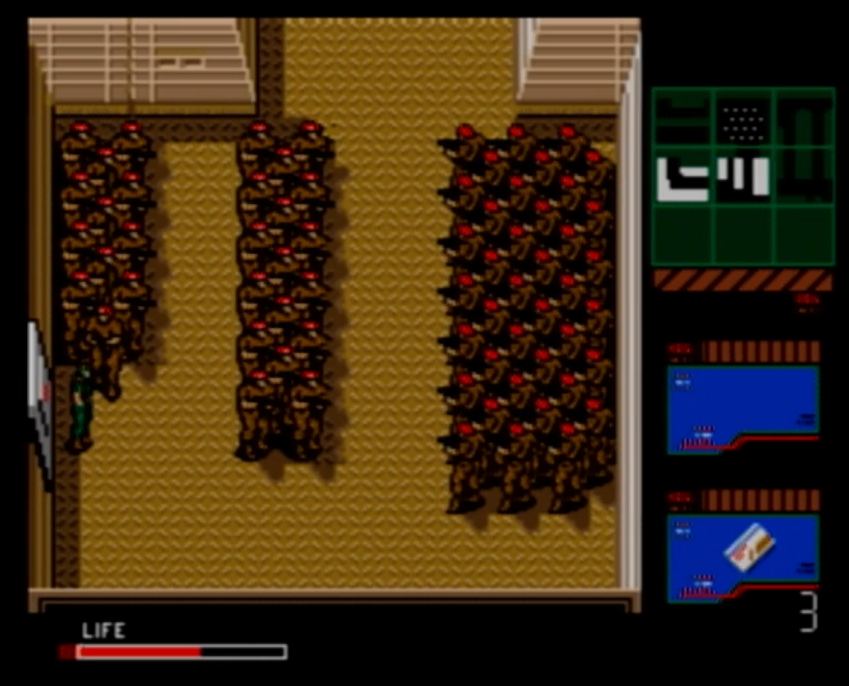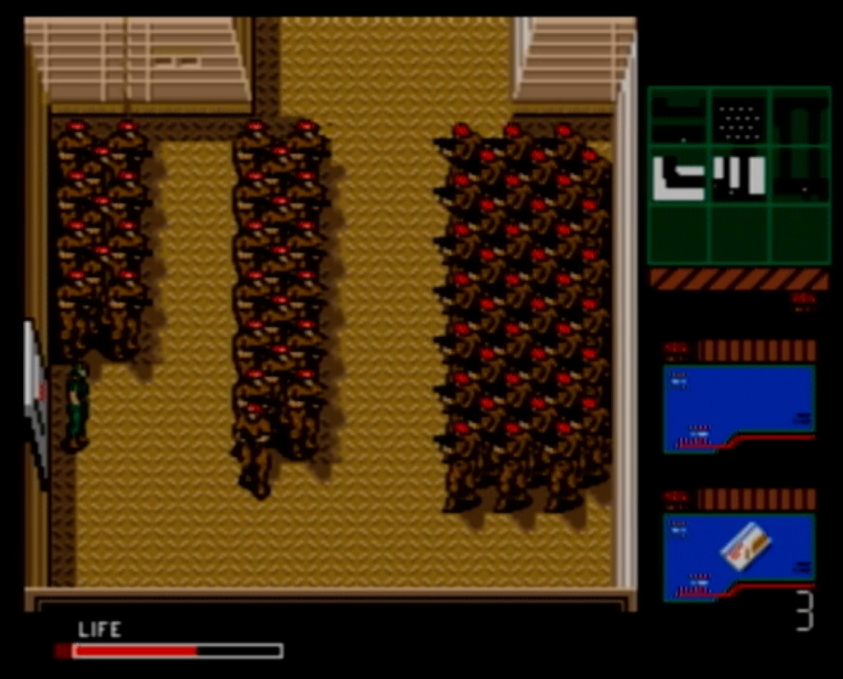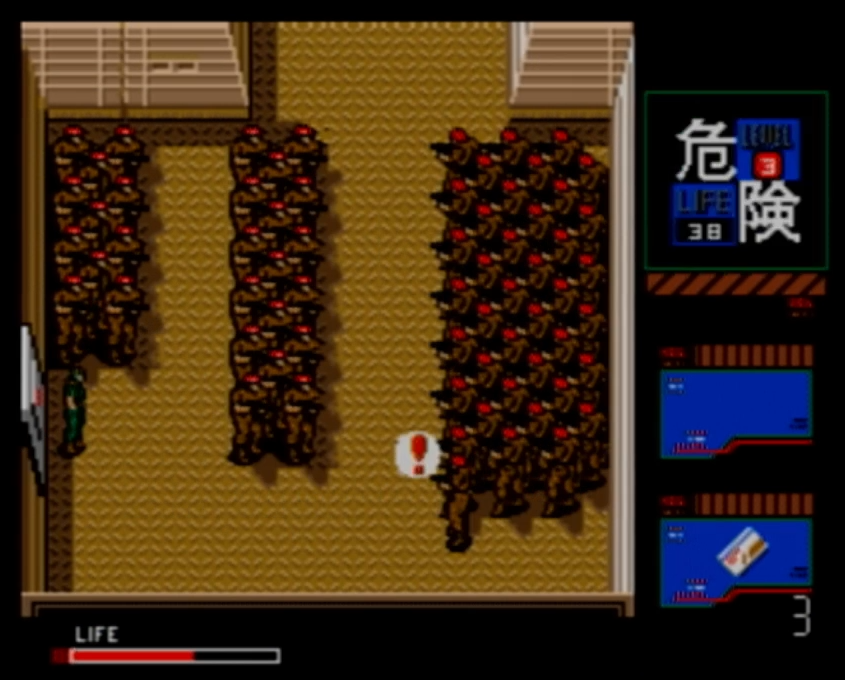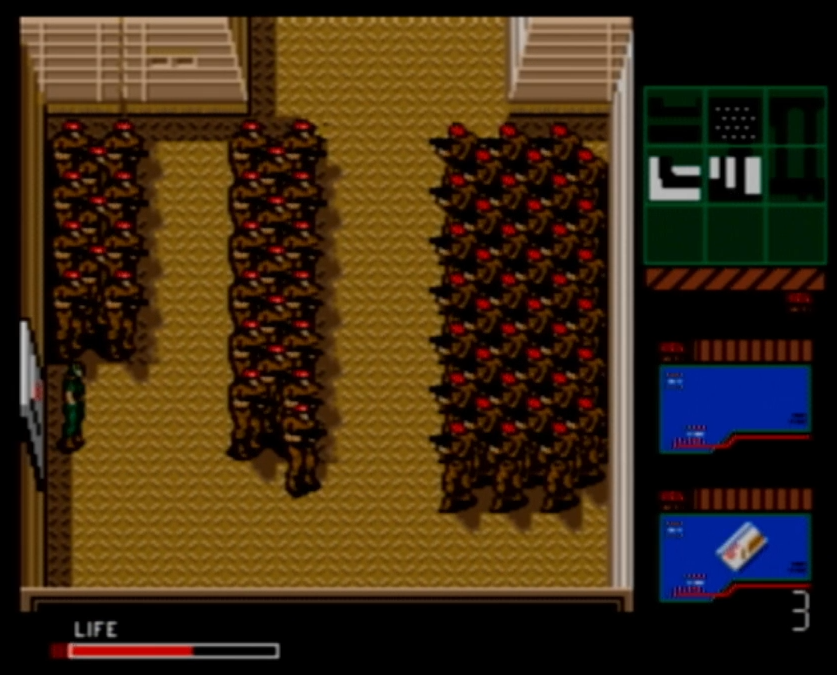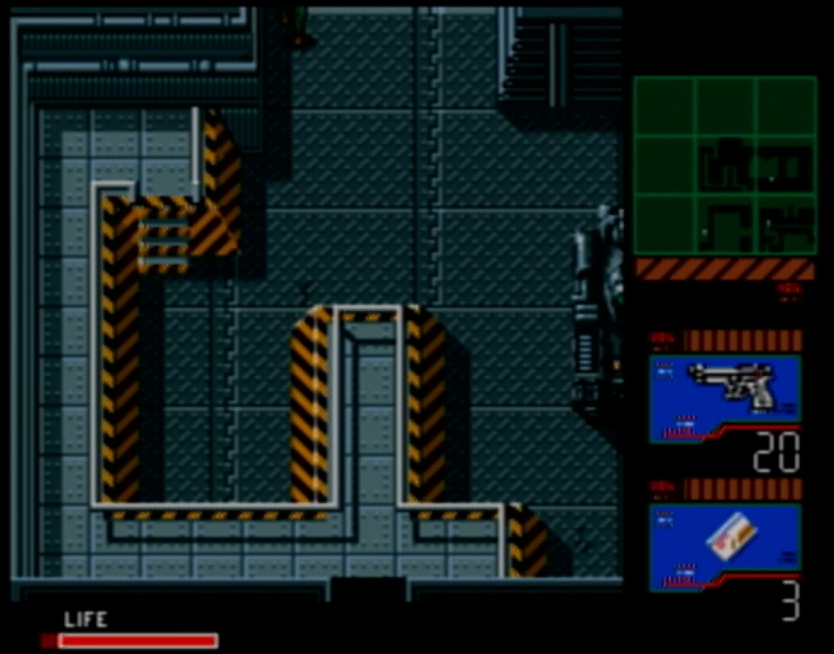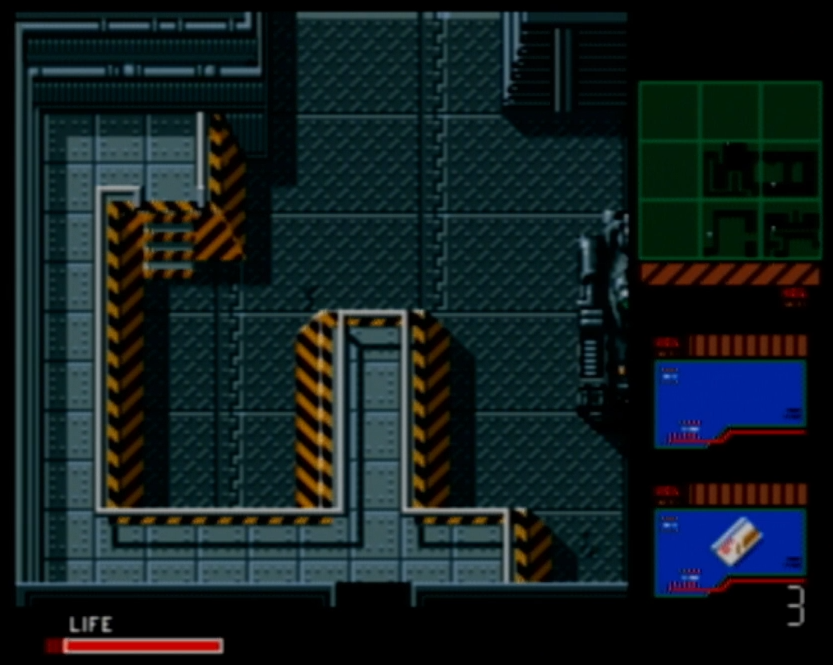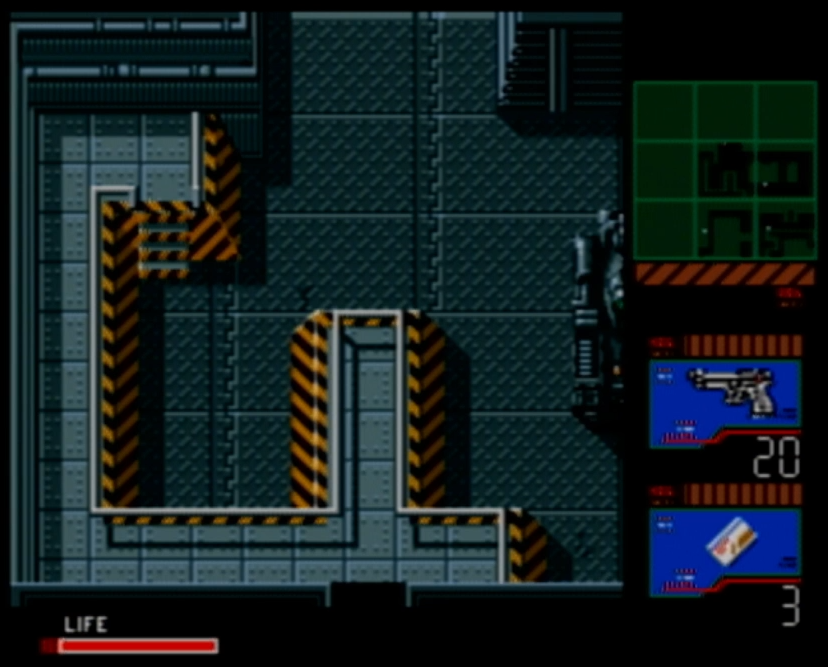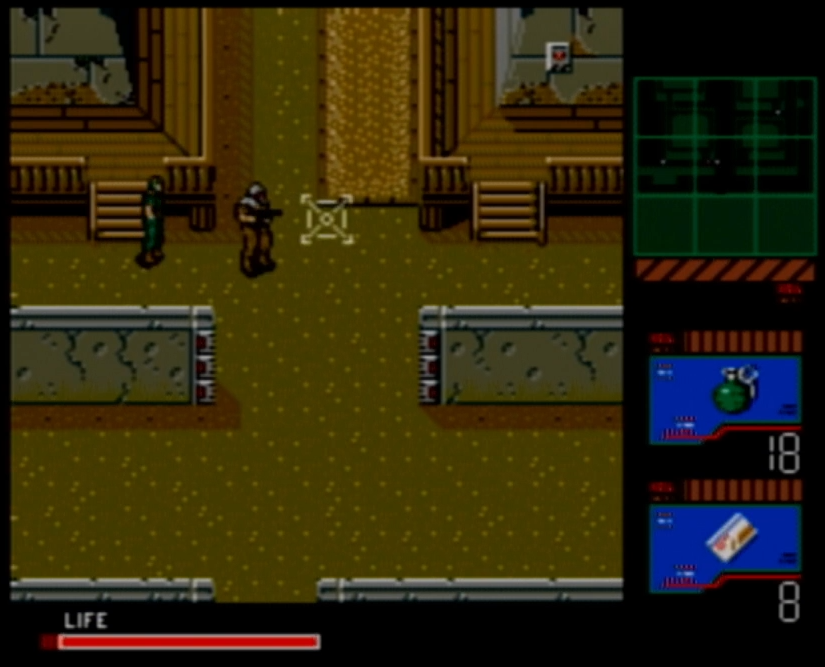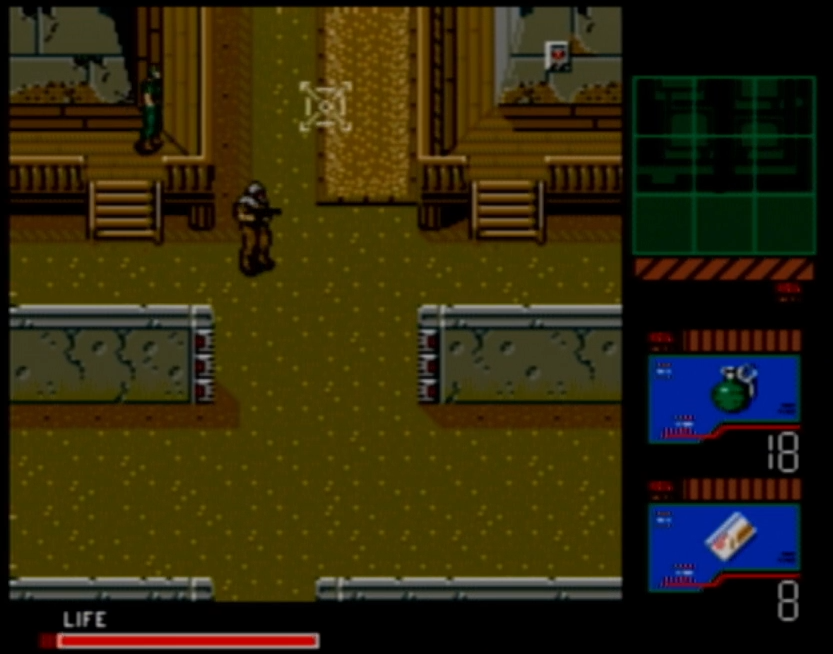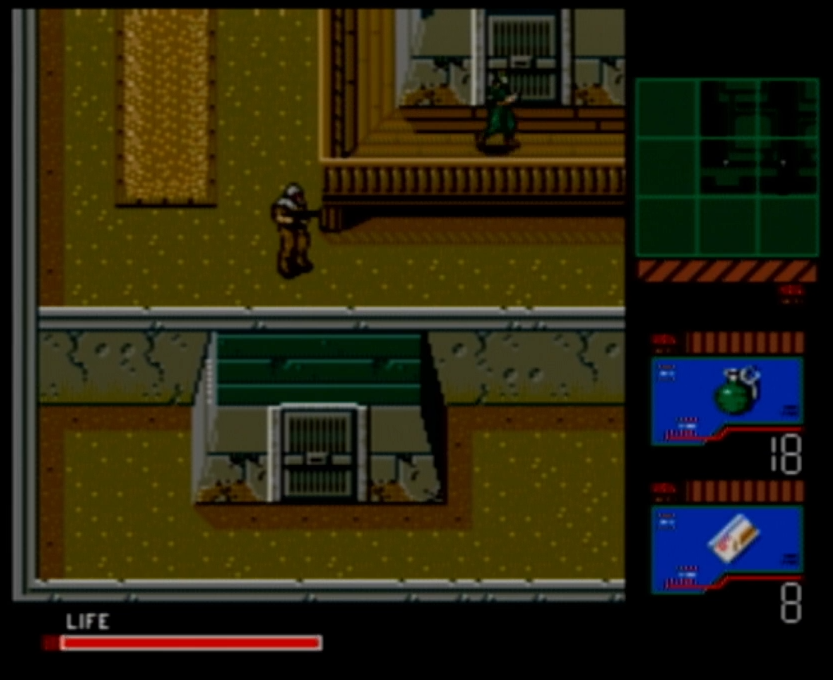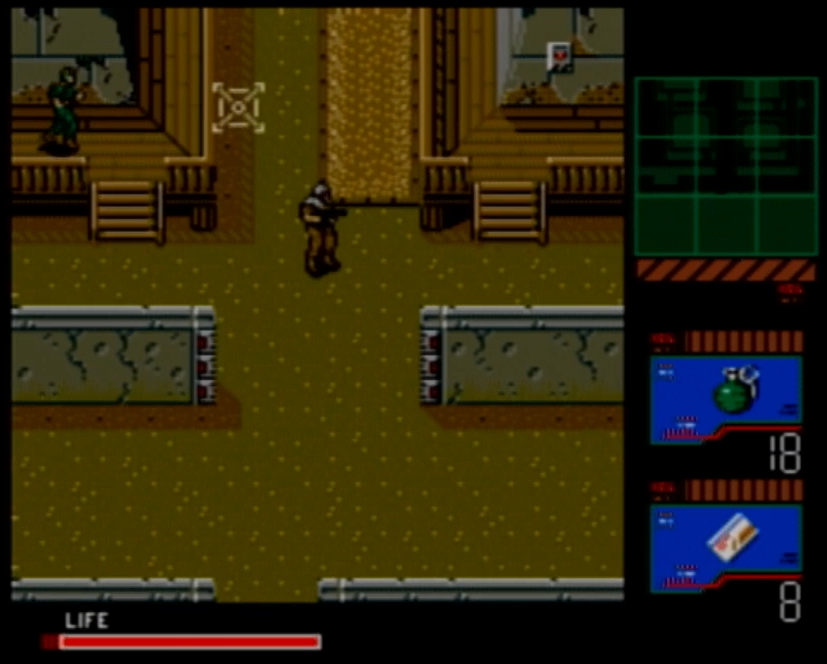An often overlooked segment of the Metal Gear Speedrunning scene is the collection of 2D games. Metal Gear, Metal Gear NES, Snake’s Revenge, Ghost Babel and Metal Gear 2: Solid Snake. In particular, we’re going to talk about Metal Gear 2: Solid Snake, and why more people should give the game a shot.
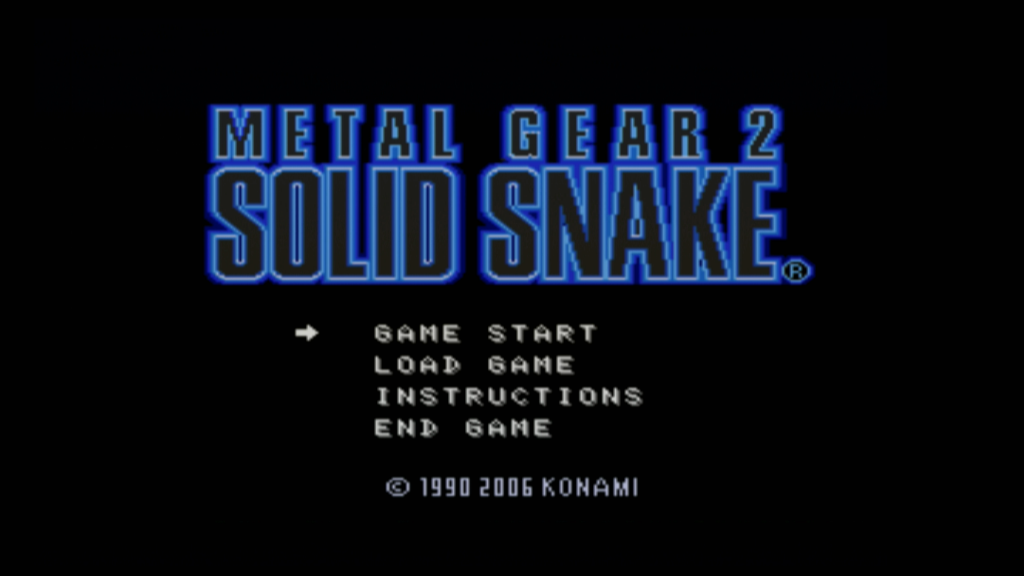
As a Speedgame, Metal Gear 2 has a lot of unique and interesting tech. Similarly to Metal Gear 1 on MSX, Metal Gear 2 uses a 4 way movement system. For starters, Metal Gear 2 is a very movement centric game. This is a bit of a silly statement, as all speedgames are movement centric to a certain degree. But in this game, good movement and taking the proper lines is critical to not only getting a good time, but for certain room strategies to even work. Generally, four-way movement can be quite restricting. But in the case of Metal Gear 2, it means that you need to make sure you turn at just the right time. Taking proper and precise lines is key, which is an interesting dynamic for optimizations compared to speedgames with 8 way movement. A slightly more restricted base set of movement options means each turn has to be done at just the right time to ensure you aren’t wasting any time slightly adjusting a line.
Finer Points of Movement
One key moment in the speedrun that defines whether or not you have mastered the movement of the game is during the Swamp maze right before the Running Man boss fight. You need to walk a precise “invisible” path and navigate it using visual cues so you turn at the proper points.
If you make a wrong turn during this maze it can mess up your groove with the navigation, and of course lead to some time loss. This is why it’s crucial to have this maze memorized and these visual cues can greatly help with that.
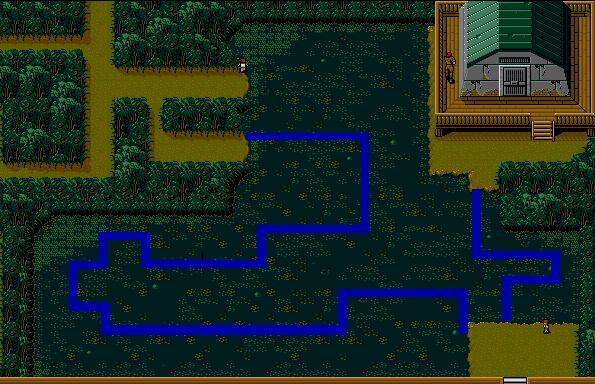
Another thing that I feel is a positive about this game, is having a good grasp on the movement in this game feels satisfying. A great part of speedrunning is that we can all gain something different out of it. Usually for me, how cool something looks doesn’t play much of a factor at all. But the Metal Gear series to me at least, looks super neat in a speedrun context and this game is no exception.
Similarly to the swamp maze, another section of the run that is rather notorious amongst runners of Metal Gear 2 is the two visits to Floor 4. It begins with a very difficult punch on a guard so you can make it past some lasers. The punch is quite tough to land, but it doesn’t end there.
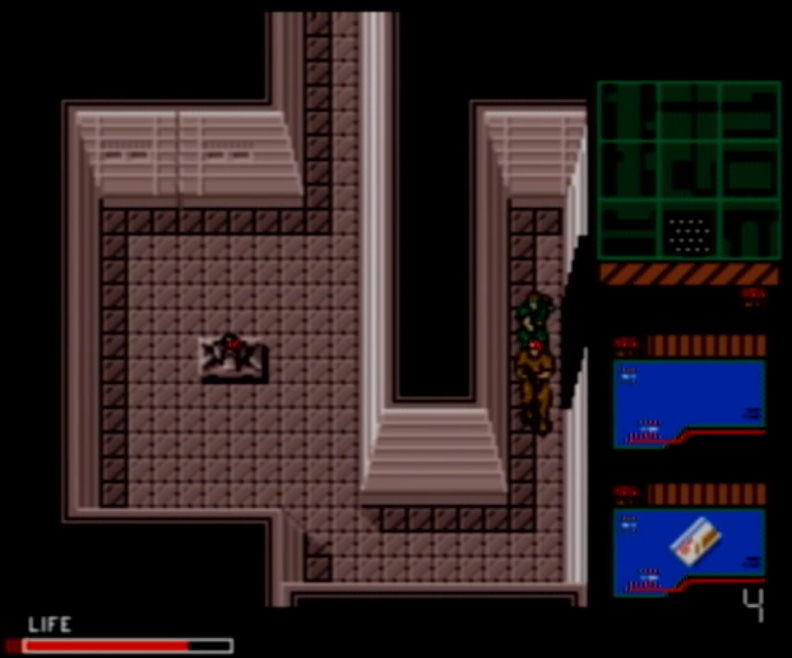
You still need to keep moving as you need to make a camera cycle and a guard cycle. But, once again it keeps going. You then must deal with the dreaded mannequin rooms. The mannequin rooms are really only a huge pain in Big Boss runs because when you enter them, you have a chance to randomly get caught by a guard. This adds an alert to your total. Since you have to visit this floor twice in the run, that makes a total of 4 potential alerts. In the Big Boss route, you have a maximum of 6 before you lose the rank. Thanks to a couple strategies formulated over the years, you can slightly reduce the chances of getting caught. You can’t eliminate it outright, but you can increase the odds in your favor.
You can see that out of the 4 possible positions for a guard in this room, one is a guaranteed alert (Position 3) and one of them is a potential alert (Position 1), which can be avoided if you punch the moment you enter the room. Positions 2 and 4 are safe and you won’t get caught.
In Game Feedback on Movement
New to MGX2 is the radar, which lets you see where guards are and which direction they’re moving in, even if they’re off screen. While the sheer amount of movement precision I’ve just described sounds pretty daunting, the game gives feedback on how you played via the radar in the top right of the screen. This is a vast improvement compared to the binoculars in Metal Gear 1, and the radar is quite helpful for speedruns. During a lot of areas, you can use guard positioning on the radar as a sign as to whether or not you did the room or area properly, since if you did, they’ll be in the same positions every time. I’ll show a couple examples so you get an idea.
The first example I’ll be showing is when you’re grabbing the remote controlled missiles after defeating Running Man. You need to do a distraction shot, crawl under a vent twice, and avoid being spotted. As you’re exiting the area and going back into the forest, the cue if you were fast or not is Green Beret’s location. If he is decently close to the screen transition line when you’re about to enter the forest, you were fast. If he shows up on screen before you load the forest, then you did some bits of it slow. The game’s feedback on your play is helpful for letting the runner know in the moment if they played an area well or not.
Note the position of the Green Beret guard in the above images. In the third image you can see he is very close to scrolling on screen, and in the prior examples he is farther back. It’s subtle, but since all you are doing once you leave is running up, you can easily check the radar to see where he is and get instant feed back on your own performance.
The next key example of the game’s feedback on your play is when you’re backtracking for Card 9. Leaving the barracks, there’s a lot of precise movement you need to do, with the goal of making it to the final screen while a guard is in a certain position in his cycle. If you do it properly, the guard will be on the left side of the screen, and will start to head to the right as you approach him. If you’re a bit slow, the moment you get onto the screen, he’ll be moving right. If you notice this, you have a small chance to make it without having to punch him, but it will be very risky. And if you get onto the screen and he’s already moving, you have to punch him or else you’ll get an alert before you make it to the next area.
In all of the above images, we’re seeing the first frame of the guard’s movement. Notice how in the last example, the guard is moving before Snake even reaches the screen he is on.
Avoiding alerts is key to MGX2 speedruns. Obviously in Big Boss, where you cannot go over 6 Alerts without losing the rank, but somewhat less obvious in Any%. Each Alert you get from a guard will trigger a freeze frame that locks movement away from you for 1 second. The In Game Timer still ticks during that freeze frame, which means for every alert you lose 1 second. Careless movement can cause this number to rapidly shoot up, and if you make small movement mistakes in certain areas you can lose time for what seems like no reason.
In-game feedback on your movement is nice, as it helps you know if you did everything right rather than having to guess what went wrong, and with most stuff coming down to movement in this run, you can very clearly figure out the cause of the time loss. But, a run based purely on movement and nothing else is boring to run. True, in the moment it’s quite annoying when randomness is the cause of time loss in a run, but without it you would have a run where the slightest mistake means a reset. And that can be very exhausting and irritating to play. It can dampen the soul and spirit quite easily. The random factors in an MGX2 run are quite impactful, however not as common as you might think.
Boss Fights
Take for example the boss fights. There are several in the run yet only a small handful are actually random. Or at least, random enough for the variable fights to lose you a large amount of time. The boss fights that either have a consistent setup, or do not feature anything random at all are: Black Ninja, Running Man, Hind-D, Red Blaster, Four Horsemen, Dr. Madnar and Metal Gear D. This is an overwhelming majority of the fights in the run.
The first boss you’ll encounter that can give you random patterns is Jungle Evil. He pops up randomly around his arena and will either fire at you for a bit before hiding again, or he’ll get up only to pop back into the brush. You want to keep him in the first room of his arena as it has the fewest places for him to show up where getting to him would result in missing a hit. This fight is even more difficult and random on Big Boss where you cannot tank as many hits as you can on Any%, leading you to have to wait until he is in a position where you can safely hit him. Somewhat annoying is that if you do the same manipulation that is used for the Black Ninja fight, it results in the perfect Jungle Evil fight. Sadly, this cannot be done in an actual speedrun. More detail on the Black Ninja manipulation later.
After Jungle Evil is Night Fright, who can vary slightly. The strategy is to stand in a specific section of the room and throw grenades ahead of you. In most cases, because you aren’t moving, Night Fright will stay in that general area and try to attack you. But your grenades do way more damage then his shots do, and he goes down quickly. Although rare, if for some reason he decides to move around, you can lose time here.
Gray Fox has a somewhat reliable manipulation of making him run into the mines surrounding the arena. But there’s a chance it can fail. Thankfully, the backup is to just fight him as normal, and if you made him run into a good amount of mines, he won’t have much HP left.
The final boss of the speedrun is also the last boss that can give you detrimental patterns. And that’s the man himself; Big Boss. This is where a lot of time can be lost should Big Boss decide not to cooperate. The first phase of the fight is just collecting what you need to defeat him. But the second phase you actually have to track him down. Big Boss tends to be aggressive and go after you, but sometimes he can just run off leading to wasted time chasing him down. Not to mention, you need to be near the exit when the fight ends so you can leave the arena as soon as possible. What I mentioned for Gray Fox and Big Boss is even more of a time loss and even more dangerous when doing the Big Boss route as you will die easier than you would in Any%, making the dropped strategy potentially run ending.
There is one more random element to the game I have yet to mention. Right after Red Blaster is a bird that has the codec number for Kio Marv, which you need to call. In order for the bird to even drop onto the ground, you need to have B2 Rations equipped. But that’s just to give you the chance for the bird to drop. It’s still random when it drops, or if you can even get the number from the bird when it does. Sometimes it will trick you by landing and then instantly going back into the air again. Sometimes the bird will land and then just walk off screen for no reason. Sometimes you’ll enter the room and the bird will already be on the ground, and will just walk right up towards you. You can potentially lose or save a lot of time here.
Platform / Regions
There are a couple different versions of Metal Gear 2. There’s the MSX2 Original version released for Mobile Phones, and then later on placed onto MGS3 Subsistence. We’ve been talking about the latter here, as it’s the version with the most players in a speedrun setting, though the MSX2 Original is still an interesting run in its own right and worth checking out. The platforms available to run the game on are PS2, PS3 and Xbox 360 along with subsequent Xbox platforms. Let’s go over them from the worst version to run on to best.
To start off with, the absolute worst platform to run MGX2 on is PS3 via the MGS HD Collection. Quite unfortunate, as I’d imagine this is the most accessible version for a lot of people to be playing. The reason it’s not ideal has something to do with the very first boss in the speedrun, Black Ninja. This boss is quite notorious in the MGSR scene as being very difficult. While not being particularly tough on Any%, where the run is done on Easy, Black Ninja is random and can give you some very slow patterns. On every platform besides PS3, you can perform a manipulation on Black Ninja that not only makes the fight safer for Big Boss, but also faster, which saves time in Any%. I’ll explain the manipulation later, but for now just know that PS3 is the worst version to speedrun MGX2 on. It’s not recommended, however everything in the route for both Big Boss and Any% work just fine.
Right in the middle between best and worst lies Xbox, and the trick up its sleeve is that for some reason; Xbox HD Collection can perform the manipulation. Which for a while, was assumed to be a PS2 only strategy.
That’s the only advantage to playing on Xbox, so now it’s time to explain this manipulation. On PS2 and Xbox HD Collection, when you’re on the main menu prior to selecting “Metal Gear 2” (Disc 2 Main Menu on PS2, the MGS3 Main Menu on Xbox) The RNG seed is set to 0. Opening the game from here and then beginning a file will keep the RNG set to 0. This means that we can manipulate what Black Ninja will do in the fight by doing the same thing every time leading up to his arena. If you lose the run later on and wish to reset, all you have to do is exit out of the game completely, back to the MGS3 menu, and open the game up again. On PS3, going back to this menu doesn’t reset the RNG to 0…but on PS2 and Xbox consoles it does.
Without a doubt the fastest platform to run MGX2 on would be PS2. PS2 can do the Black Ninja manipulation, and it’s where the manip was originally found. But that’s not the only thing PS2 has up its sleeve. The main reason PS2 is the best platform is it has access to a unique version, the PAL release. For standard definition consoles, the PAL region of a game is generally regarded as slower due to the video signal. The games would then, more often than not run at a slower framerate compared to NTSC-U and NTSC-J. The game running at 50hz PAL signal however is the reason that the PAL version is superior for a speedrun. During development, Snake was moving abnormally slow. So slow that it was detrimental to gameplay. So they decided to speed up Snake’s movement by 12%, which means that in PS2 PAL, Snake just runs faster than he does on other versions. This makes PS2 PAL the optimal release of the game to speedrun on. Now, this is a rather specific release of the game to be playing on. It’s already quite inaccessible to a fair amount of people, due to needing either a PAL PS2, a PS2 softmodded to use Swap Magic, a FreeMcBoot compatible PS2, a modchip, or a Mechapwn compatible PS2. But fear not! PCSX2 may be a rather shoddy emulator in my opinion, but it runs both MSX Metal Gear games perfectly fine, and is allowed for speedruns. There’s no emulator inaccuracy here, just need an .ISO of Disc 2 of MGS3 Subsistence and you’re good to go.
You might be thinking it’s quite unfair to compare PS2 PAL to other releases of MGX2 on a leaderboard, and you’d be right! It is unfair, which is why the two versions are separated. So if you would rather play on NTSC or any of the other platforms you will be competing with others who wish to do the same.
MGX2 is one of the more underrated speedgames in the Metal Gear franchise, and it has a category for everyone’s preferred way to speedrun MG. If you’re looking for a 2D Metal Gear Speedrun to get into but aren’t sure which one is right for you, perhaps this game will do the trick.
If you haven’t yet seen any runs of MGX2, I have a couple recommendations for you to go and check out. First up is the Big Boss WR by Jaguar_King, which is done on PS2 PAL, but he also has a time on the other versions besides PS2 PAL. I would then direct you towards the Any% WR’s on PS2 PAL and other platforms, both times are by me as of writing this post. It showcases some of the big differences and the similarities between the two routes. And finally, I actually ran MGX2 in AGDQ! You should check that out as well as it’s a great showcase of the game and I feel like it has a great balance of being informative about the speedrun and entertaining.

